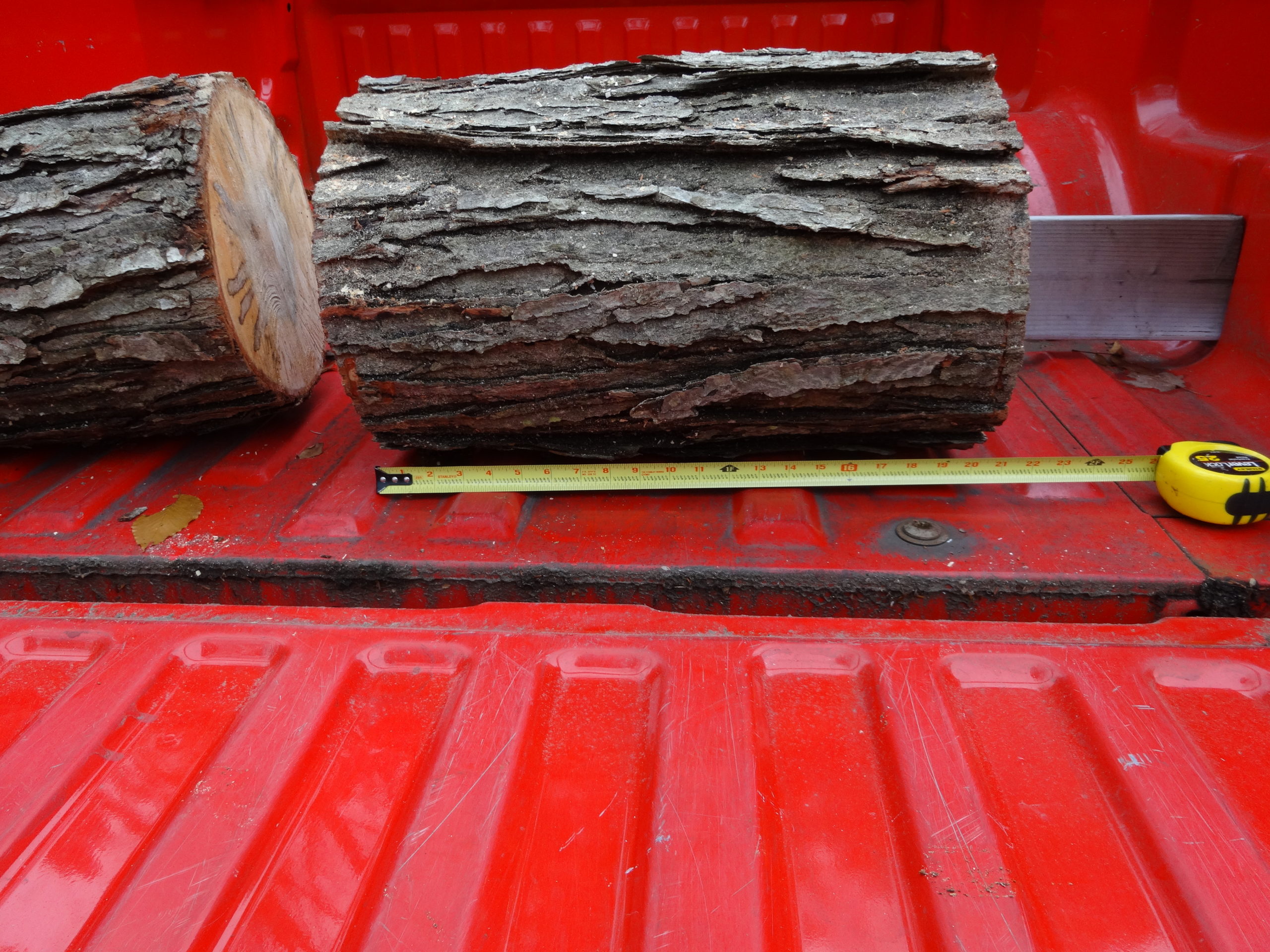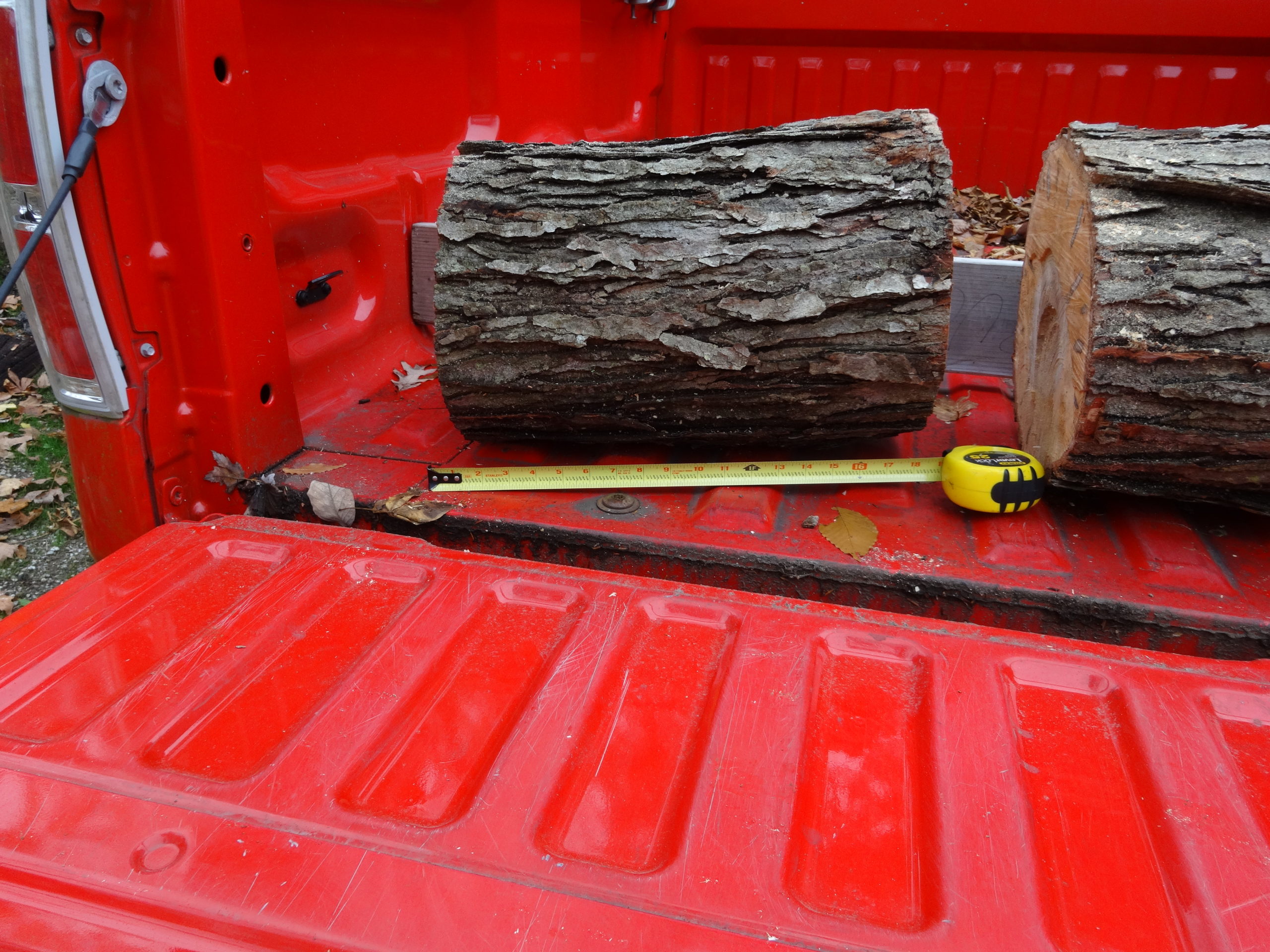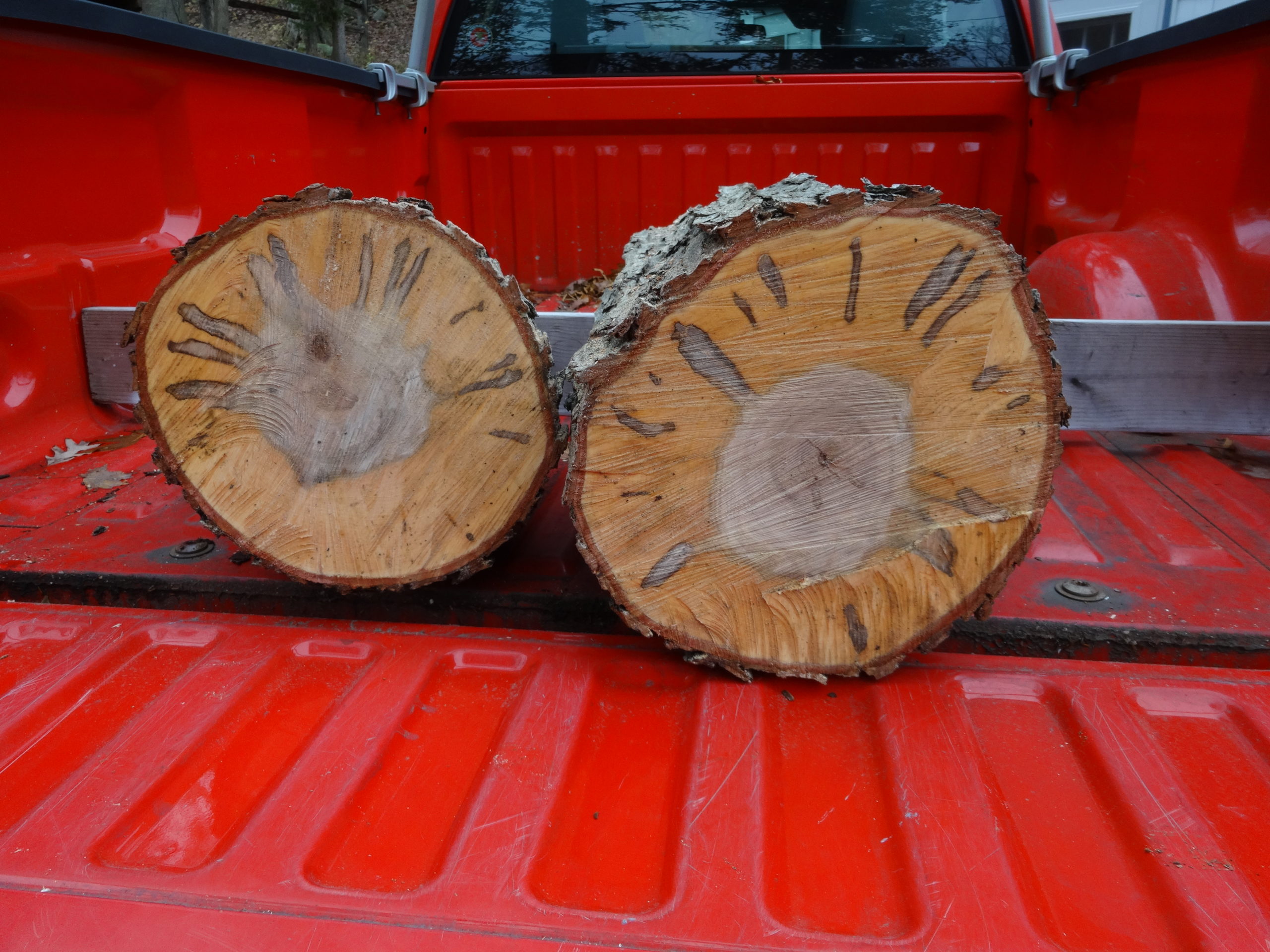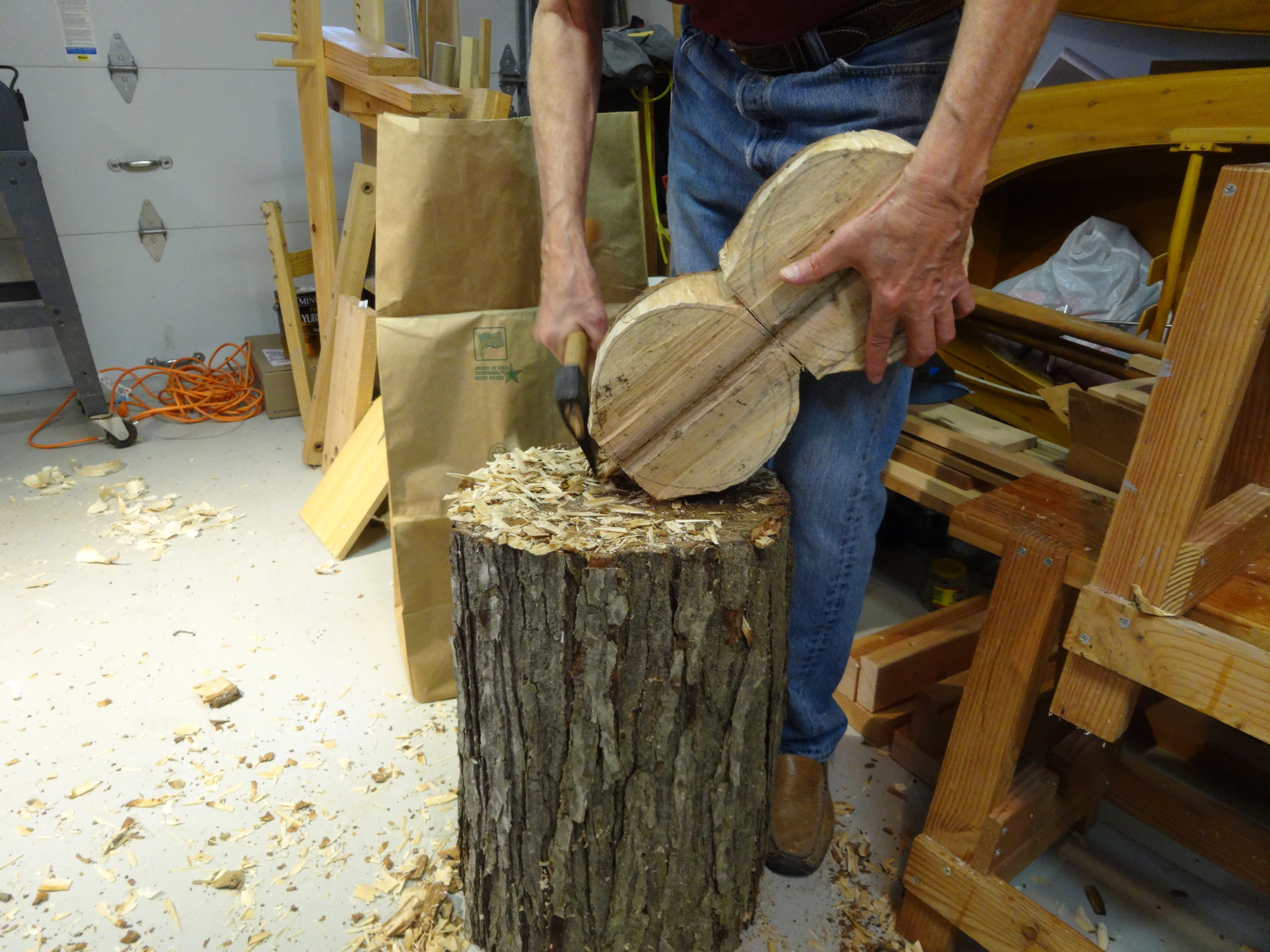My tree identification capabilities are woeful. I can manage a few when I can see their leaves, but in winter, without leaves, nada. I live near a forested public park. A few months ago, a crew removed a number of trees that were crowding one of the roadways. I stopped to pick up a couple of logs. My first impression was oak, but after doing a lot of tree bark images searches I now doubt that it is oak. …and I haven’t yet found a good, comprehensive, guide to identifying by bark.
FWIW, it looks like the staining is associated with beetle holes. Whether useful for anything else, the longer one makes a good chopping block.
Can anyone name that tree? [Leave a comment.]
(Click an image to access a slideshow that offers a “View full size” link. Then, click again.)
Thanks!




If beetle holes, I wonder if it’s butternut, which is slowly being wiped out by beetles. It carves nicely.
First thought was maple from looking at the bark. Ambrosia-like stains reinforces that guess.
Ambrosia Maple is correct. Google “Ambrosia Maple Log”. There are multiple similar photos by sawmills saying Ambrosia Maple.
I also say Ambrosia Maple. I grabbed a couple of logs off the side of the road with the same markings.
Once you saw it you will see the dark streaks that will have a worm hole at one end in most of the pieces.
Oak will have the characteristic open grain and will also have its own smell.
Many THANKS for the quick answers!
As much as I would like it to be Butternut, Todd, I think Ambrosia Maple is the right answer.
I have one of those logs split open and the wood is very hard, more like maple than the easy-carving Butternut.
THANKS all!
Turn a bowl from a half log. You’ll like the look.
The bug holes are probably emerald ash borer, which also gets ambrosia maple.
Decided! …and what I’ve learned over the past 24 hours.
– These logs are Ambrosia Maple.
– The “figure” of dark streaks through the wood is caused by secretions from the Ambrosia beetle.
– This figuring is considered attractive by many. … and destructive by those in the southern U.S. where the species attacks various fruit and ornamental trees.
– Variants of the Ambrosia beetle is also known as the Black Twig Borer, and other sorts of black borers in the northeastern U.S.
– The Emerald Borer is a completely different creature and mostly attacks Ash. They also produce a distinctive pattern of girdling just below the bark, which is not present in the logs I have.
– When one asks a question of people with similar interests, answers magically arrive. 🙂 In other words, our acquaintances are generous.
THANKS to all made the effort to answer. One half of one of those logs is already in the process of becoming a carved, not turned, bowl, similar in style to the earlier bowls. I have yet to find the actual remains of a beetle while carving this wood. I think they used the tree a long time ago. …more on that bowl later… …maybe…